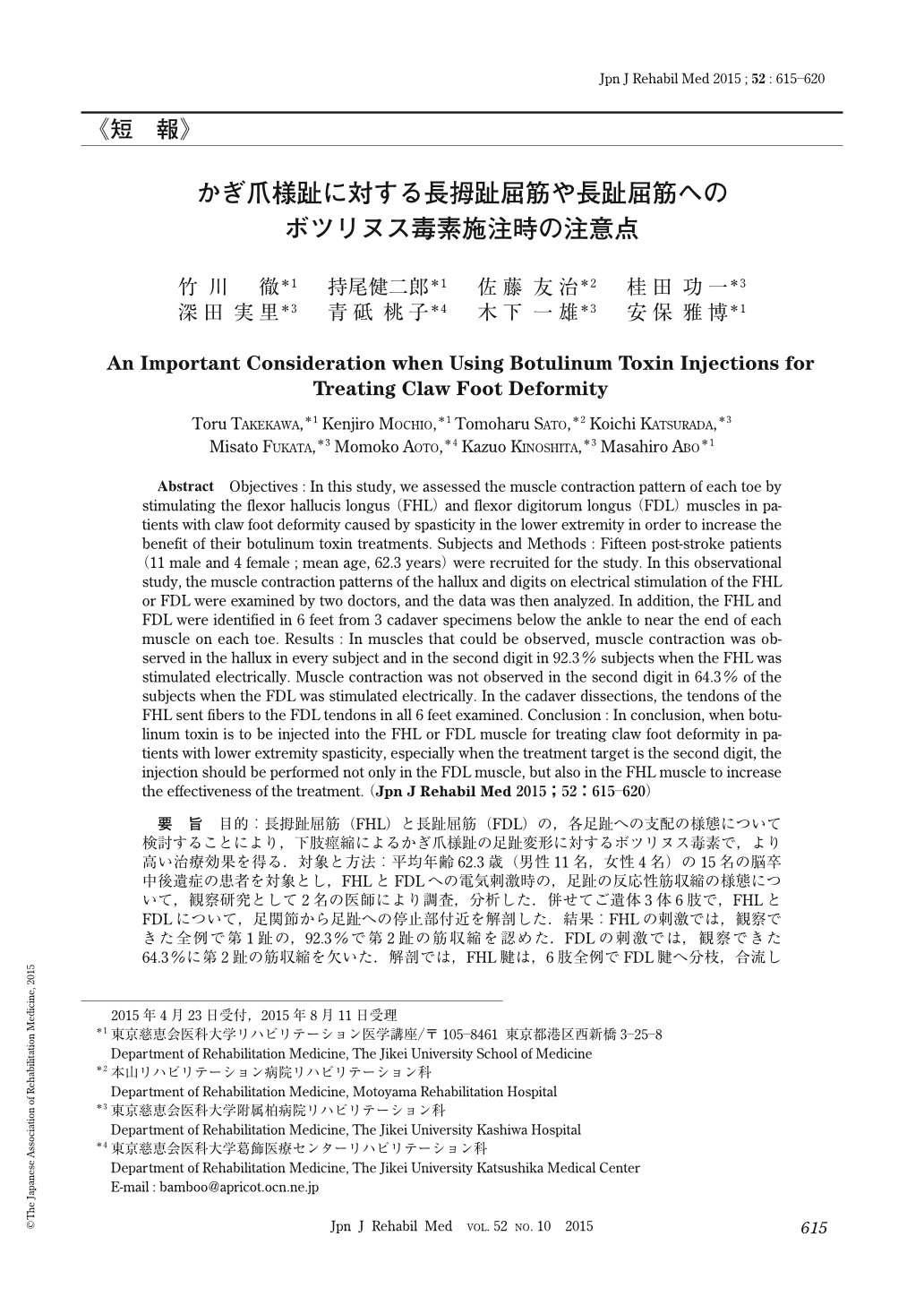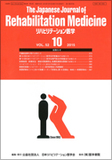Japanese
English
- 販売していません
- Abstract 文献概要
- 1ページ目 Look Inside
- 参考文献 Reference
要旨 目的:長拇趾屈筋(FHL)と長趾屈筋(FDL)の,各足趾への支配の様態について検討することにより,下肢痙縮によるかぎ爪様趾の足趾変形に対するボツリヌス毒素で,より高い治療効果を得る.対象と方法:平均年齢62.3歳(男性11名,女性4名)の15名の脳卒中後遺症の患者を対象とし,FHLとFDLへの電気刺激時の,足趾の反応性筋収縮の様態について,観察研究として2名の医師により調査,分析した.併せてご遺体3体6肢で,FHLとFDLについて,足関節から足趾への停止部付近を解剖した.結果:FHLの刺激では,観察できた全例で第1趾の,92.3%で第2趾の筋収縮を認めた.FDLの刺激では,観察できた64.3%に第2趾の筋収縮を欠いた.解剖では,FHL腱は,6肢全例でFDL腱へ分枝,合流していた.結論:下肢痙縮患者のかぎ爪様趾の足趾変形に対して,FHL,FDLへボツリヌス毒素を施注する際,特に第2趾を標的とした場合には,FDLのみならず,FHL等への施注も検討されるべきである.
Abstract Objectives : In this study, we assessed the muscle contraction pattern of each toe by stimulating the flexor hallucis longus (FHL) and flexor digitorum longus (FDL) muscles in patients with claw foot deformity caused by spasticity in the lower extremity in order to increase the benefit of their botulinum toxin treatments. Subjects and Methods : Fifteen post-stroke patients (11 male and 4 female ; mean age, 62.3 years) were recruited for the study. In this observational study, the muscle contraction patterns of the hallux and digits on electrical stimulation of the FHL or FDL were examined by two doctors, and the data was then analyzed. In addition, the FHL and FDL were identified in 6 feet from 3 cadaver specimens below the ankle to near the end of each muscle on each toe. Results : In muscles that could be observed, muscle contraction was observed in the hallux in every subject and in the second digit in 92.3% subjects when the FHL was stimulated electrically. Muscle contraction was not observed in the second digit in 64.3% of the subjects when the FDL was stimulated electrically. In the cadaver dissections, the tendons of the FHL sent fibers to the FDL tendons in all 6 feet examined. Conclusion : In conclusion, when botulinum toxin is to be injected into the FHL or FDL muscle for treating claw foot deformity in patients with lower extremity spasticity, especially when the treatment target is the second digit, the injection should be performed not only in the FDL muscle, but also in the FHL muscle to increase the effectiveness of the treatment.

Copyright © 2015, The Japanese Association of Rehabilitation Medicine. All rights reserved.


